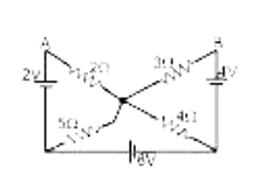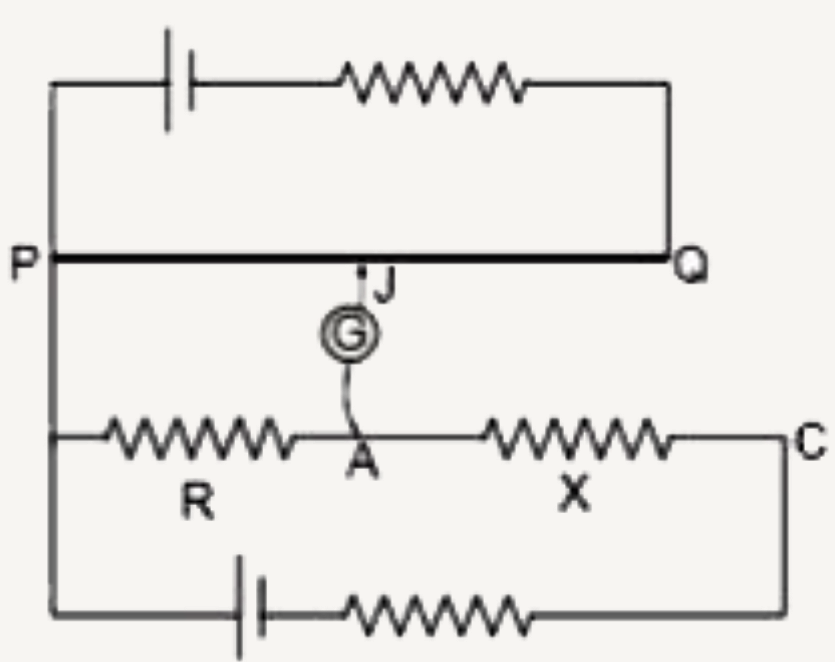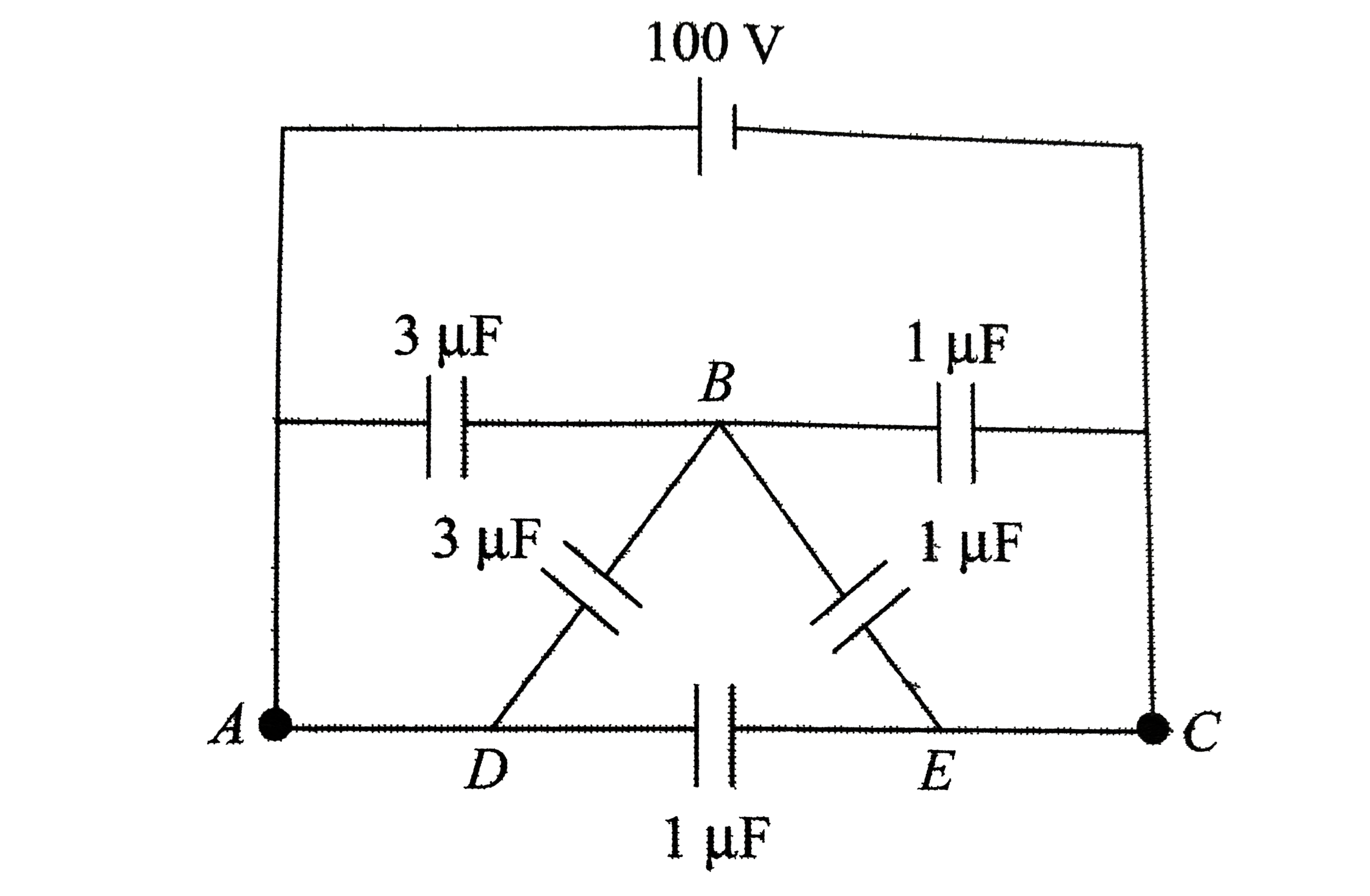A व B के मध्य विभवान्तर (VA−VB)_ _ _ _ _ _ है |

2V
4V
8V
12V
The correct Answer is:B
Step by step video & image solution for A व B के मध्य विभवान्तर (V_(A)-V_(B))_ _ _ _ _ _ है | by Physics experts to help you in doubts & scoring excellent marks in Class 12 exams.
Updated on:21/07/2023Topper's Solved these Questions
Similar Questions
विभवमापी द्वारा प्रतिरोध मापने का परिपथ दर्शाया गया है। गेल्वेनोमीटर को पहले A बिन्दु से जोड़ते है तथा शून्य विक्षेप की स्थिति, लम्बाई PJ = 10 cm पर प्राप्त होती है। द्वितीय स्थिति में इसे C बिन्दु से जोड़ते है तथा शून्य विक्षेप की स्थिति P बिन्दु से 30 cm की लम्बाई पर प्राप्त होती है। तो अज्ञात प्रतिरोध x है।

View Solutionएक छड जिसकी लम्बाई l और अनुप्रस्थ काट क्षेत्रफल A है की परिवर्ती ऊष्माचालकता k=αT, से दी जाती है, जहाँ α एक धनात्मक नियतांक है और T केल्विन में तापमान है छड़ के दोनों किनारे ताप T1 और T2(T1>T2) पर बने रहते हैं। छड़ से प्रवाहित ऊष्मीय धारा होगी-
View SolutionWhat is V_(A)-V_(B) in the arrangement shown in.What is the condition such that V_(A)-V_(B)=0
View SolutionIn the system is in steady state. Then
a. VA−VB=_______
b. VB−VC=______
c. VD−Ve=______
d. The energy stored in the circuit is "________"
 .
.
View SolutionTwo masses A and B are connected with two an inextesible string to write constraint relation between v_(A) & v_(B) Student A : v_(A) cos theta=v_(B) Student B : v_(B) cos theta=v_(A)
View SolutionFind out following (i) V_(A)-V_(B) (ii) V_(B)-V_(C) (iii) V_(C)-V_(A) (iv) V_(D)-V_(C) (v) V_(A)-V_(D) (vi) Arrange the order of potential for points A, B, C and D.
View SolutionFind V_(A)-V_(B)
View Solutionयदि loge(a+b2)=12(logea+logeb), तब a व b, के मध्य सम्बन्ध होगा।
View Solutionतीन संकेद्रीय गोलीय कोश की त्रिज्याएँ a, b व c(a<b<c) हैं तथा इनके आवेश पृष्ठ घनत्व क्रमशः σ,−σवσ हैं | यदि VA,VBवVC तीनों गोलीय कोश के विभव हों , तब c = a + b , के लिये है
View Solutionरेखा व समतल के मध्य कोण
View SolutionIn the given circuit find the |VA−VB| where VA,VB are electric potentials at the points A and B.

View SolutionWhat is VA−VB in the arrangement shown in.What is the condition such that VA−VB=0
View SolutionIn the system is in steady state. Then a. V_(A)-V_(B)="_______" b. V_(B)-V_(C)="______" c. V_(D)-V_(e)="______" d. The energy stored in the circuit is "________" .
View SolutionIf the above question, the potential has correct relations as given=
A. VA>VB>VC>VD
B. VA>VB≥VC>VD
C. VD=VC=VB=VA
D. VC<VB>VA>VD
View SolutionFind out following

(i) VA−VB (ii) VB−VC (iii) VC−VA (iv) VD−VC
(v) VA−VD (vi) Arrange the order of potential for points A, B, C and D.
View Solution
